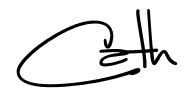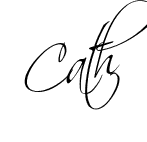Wendy sent me an email asking: "I'm curious as to your method of securing the applique pieces before stitching the edges? I've had very little experience with applique. What I've done has turned out fine but it just seemed so tough to sew through. Anyway, if you don't mind giving me some tips that would be great." In this instance, the applique is blanketstitching by hand.
I have decided to answer on my blog so that if anyone else has been wondering the same thing, this might help too.
Well firstly of course is the fusible webbing I have used many kinds of this webbing. (I have linked a couple of these to sites that offer instructions for use) Vliesofix is probably the one most of us know best but we have been having some problems with it in this part of the world. Not sure if the humidity is a factor or not. Because of this I have been trying other brands. Heat 'n Bond is a good one except I find it hard to draw on as the adhesive is very bumpy. I have also tried Appli-kay wonder which has a sticky backing so you can lift it if you haven't placed it in the right spot. I didn't mind this but I had difficulties getting it to adhere to the fabric in step three of their instructions. I recently bought Sticky Back Fusible Web from Steam-a-Seam but I have yet to use it.
The second must do for me is to use Whisperweft on the back of the prepared applique block. It is a very open weave interfacing that can be ironed on. I just find that it gives the background fabric some support making it easier to hold as I never use a frame and prevents puckering and also hides any running threads if you incorporate embroidery. You can find it sold on a roll at most quilting outlets. I have introduced a few people to Whisperweft and they love it and use it all the time now.
 |
| Whisperweft |
Look carefully to see that they are chiselled at the tip. They are extremely sharp and slide through the fabric as if it were butter (fingers too, if you are not careful!)
 |
| My Needle Nanny in Use |
This way is also supposed to prevent your stitches from "rolling" but even so it is important that when your shape is "smiling" (convex) you need to anchor every 2nd or 3rd stitch. The 'frowns' (concaves) don't need to be anchored. I do this by doing a little backstitch into the previous stitch accross the 'T' intersection and then bring the needle up to the original spot ready for the next stitch. (hope that makes sense). Also remember, the size of your stitch is what comes naturally to you. Teeny tiny or a bit bigger than normal is ok as long as you have consistency. Consistency of size and stitch distance is what makes your stitching appear really neat. Whether you use one thread or two is a personal choice....for me it depends on the size of the shapes being appliqued but I prefer one thread most of the time.
 |
| Rolling stitches on a early piece |
 |
| fuzzy bird |
 |
| fuzzy koala ears |
Thanks for the question Wendy, I hope I have given you some helpful tips.
 This post is linked into
This post is linked into






Your stitches are lovely--so even and tiny! Happy day to you
ReplyDeleteAhh, so nice of you to share a post with your technique. I need to read back through it more closely but I really appreciate your help! Thanks so much!
ReplyDeleteThanks for all the info Cath! I always admire your neat stitching and will be using the info that you have shared. Especially on a project I put away because I was so frustrated. Now I do believe I can finish my SKOW quilt using your tips.
ReplyDeleteJust what I needed; I've been trying to applique with the so called invisible stitch, but I just can't seem to make those stitches small enough. But your blanket stitch looks very nice and in stead of making the stitches invisible, make them pretty!
ReplyDeleteSo, thanks for the tips!!
Bianca
Thank you so much for sharing all this information. It' s very helpful.
ReplyDeleteThanks Cath for all of your wonderful tips, we do not have vliesofix , whisperweft or applibond needles here that I am aware of , I use heat and bond or wonderunder without too many issues and a thin interfacing for the backing of any embroidery project but these products sure do sound wonderful , thanks again.
ReplyDeleteBeautiful stitching!
ReplyDeleteBeautiful and perfect stitching!
ReplyDelete